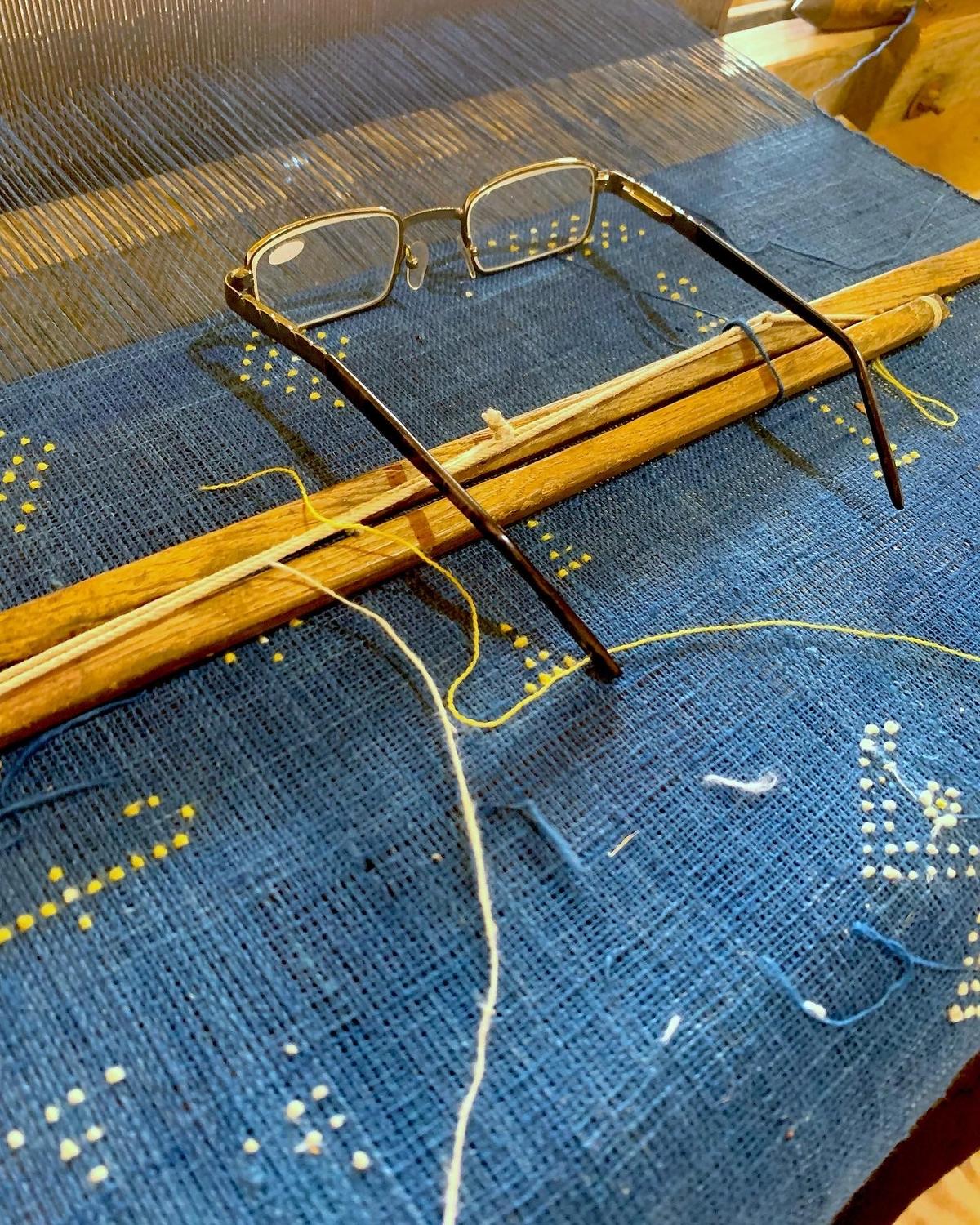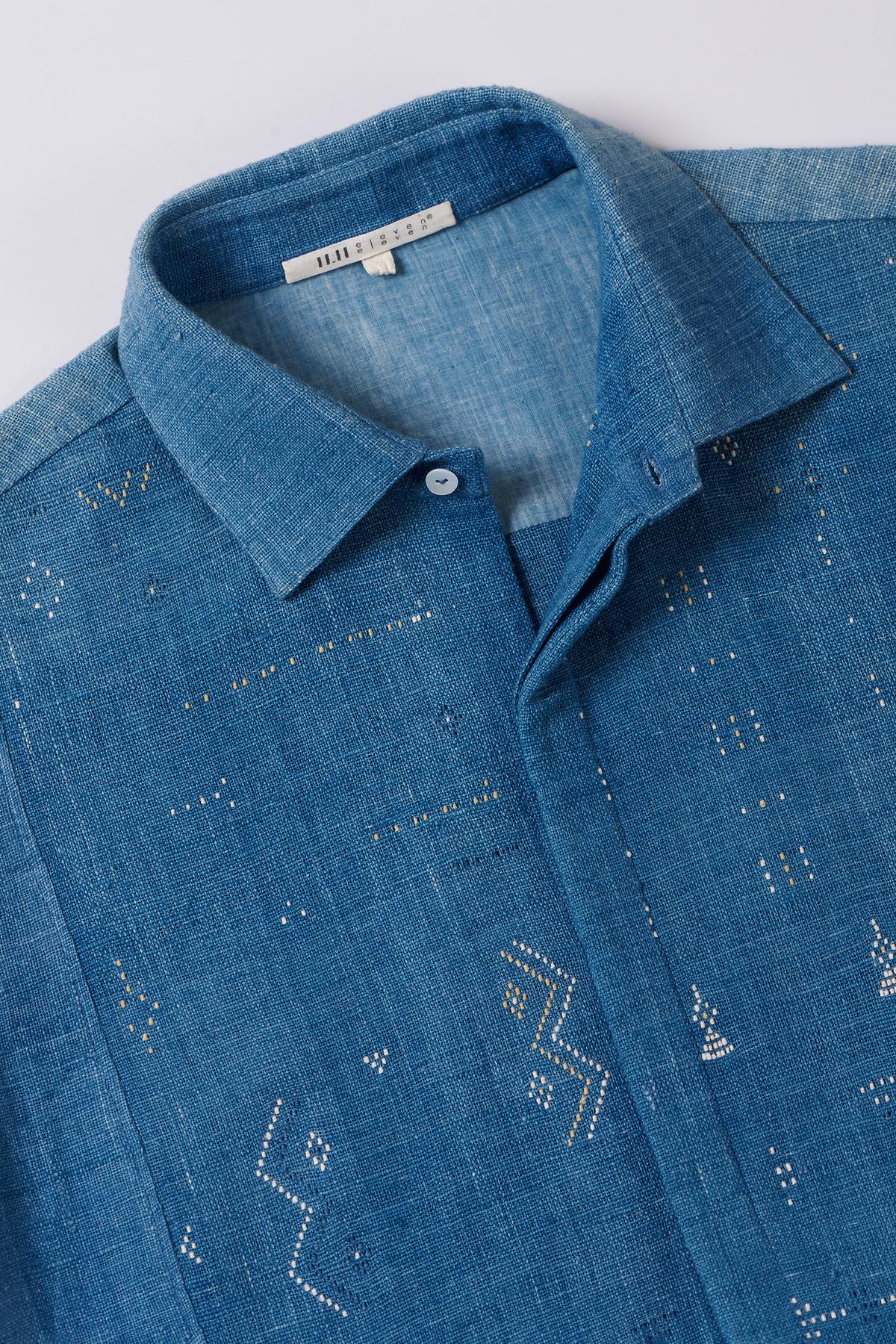Spotting an international personality in Indian designer wear is not unprecedented. But it was more than just a fashion statement when Brad Pitt recently wore a handcrafted shirt — designed by Indian fashion label 11.11/eleven eleven — created in a traditional Tangaliya weave in his Formula One movie, FI.
Brad Pitt in the Tangaliya shirt
| Photo Credit:
Special Arrangement
In a recent interview, celebrated couturier and stylist Julian Day, who was costumer designer for F1, said that the choice of the shirt was intentional and deliberate. The organic handloom indigo-hued cotton shirt, dyed naturally, was zeroed in to validate Brad’s film persona, Sonny Hayes.
Aside from the fact that only 100 weavers practise this craft today, why is Tangaliya so special? It is believed that around seven centuries ago, a man from the Bharwad faction of livestock herders in Surendranagar district in Saurashtra, wedded a woman from the weaver community, much against the consent of both their families. Nonetheless, it proved to be a marital union that propelled the meticulous and intricate Indian craftmanship. Their offspring came to be known as Dangasia, born of shepherds and weavers. They brought in the skill of Tangaliya or Daana weaving. Folks from the Dangasia community, inhabiting the villages of Vastadi, Dedadra, Godavari, and Wadhwan in Surendranagar district practise this craft. Despite its GI tag, limited awareness and being restricted to a specific region has kept the Tangaliya weave from getting its due recognition and just around a hundred weavers practise this craft today.

A snapshot of the weave
| Photo Credit:
Special Arrangement
Gheta wool is the base fabric on which designs are woven in a bead-work technique. The weaving is laborious and rigorous where every dot is made by sheathing a yarn around several threads, creating the motif on both sides of the material. Contrary to its look which resembles subtle embroidery, it is interlaced on the fabric.
Ladwa (Indian mithai) and chaklo are the predominant, traditional patterns of Tangaliya. Other designs include mango trees, date palms, peacocks, bajra plants, and naughara (new house). The demanding and painstaking technique of daanas lent a geometric and graphic touch to the motifs. They are woven on silk and cotton fabrics as saris, blouses, cushion covers, jackets and dress material. The arduous, time-consuming but striking Tangaliya designs are Ramraj, Dhunslu, Lobdi, Gadia, and Charmalia. Ramraj is the most vibrant with extensive bead work done in maroon, pink, orange, green and yellow colours over a white background.
Ladwa (Indian mithai) and chaklo are the predominant, traditional patterns of Tangaliya.
| Photo Credit:
Special Arrangement
Established by designers Mia Morikawa and Shani Himanshu, 11.11/eleven eleven is headquartered in Delhi and has a showroom in New York. This 15-year-old slow fashion brand rooted in indigenous practices, champions craftsmanship and thoughtful design through a system of small-batch, handmade production using organic cotton and natural dyes as an ethical and sustainable approach.
About their creation, Shani, says, “As global voices begin to embrace the beauty of indigenous knowledge systems, the recognition we receive today feels deeply personal; not just for the brand, but for the craftsman whose hands bring each garment to life.” In a unique step toward transparency and connection, the brand has introduced its proprietary ‘Meet the Makers’ technology: an NFC-enabled button embedded in every garment. With just a smartphone tap, wearers can trace the journey of their piece and meet the artisan community behind it.

Ranjit Sinh Parmar, founder and CEO, Palaces of India, and luxury property Ambika Nivas Palace located in Surendranagar supports Tangaliya artisans and promotes this dying heritage by organising The Muli Textile Artisans Tour. An immersive cultural trip, it enables guests to experience weavers at work, understand their craft and encourage interactions, forging new avenues for their weaves. Pleased to see the shirt featured on the big screen, he says, “It’s a celebration of legacy, skill and culture. To see it worn by a Hollywood legend, on a global stage, is beyond inspiring.”
Published – July 11, 2025 04:48 pm IST

